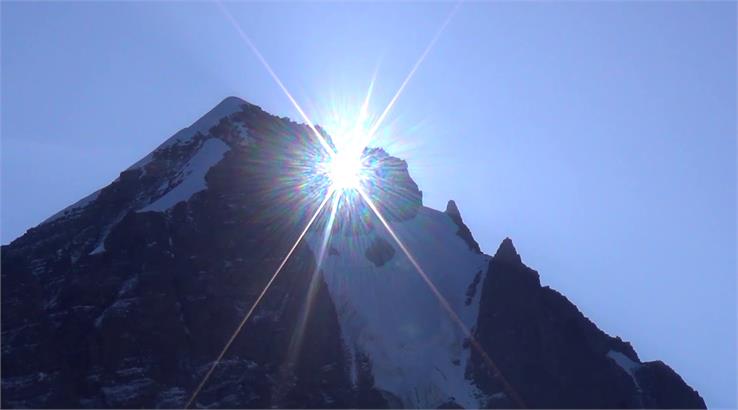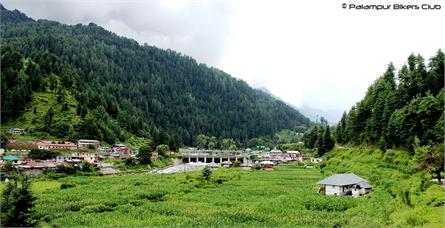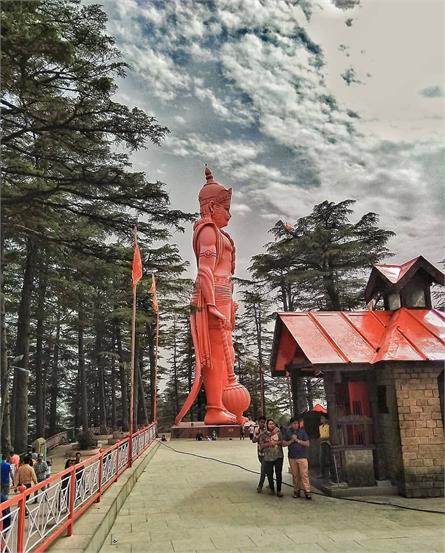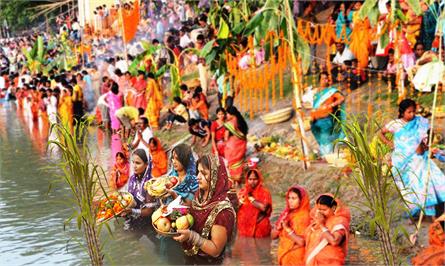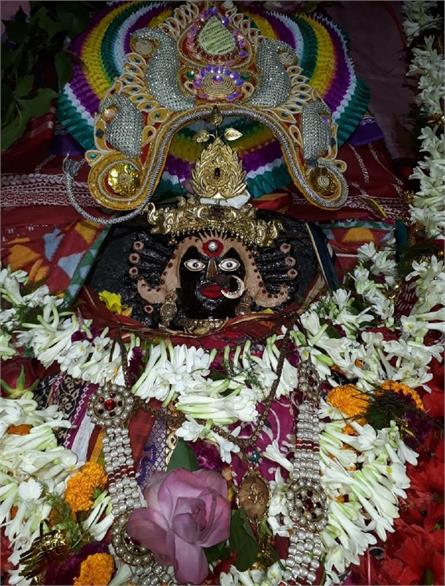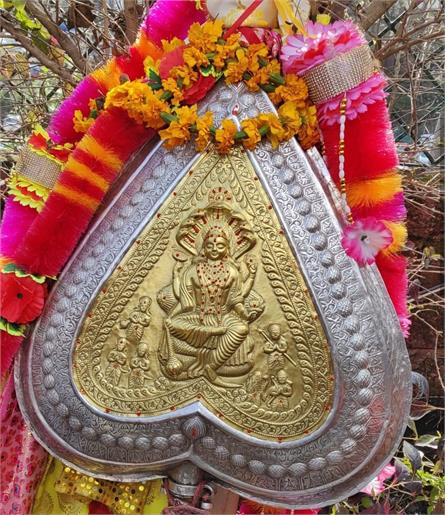Manimahesh Chamba/ Manimahesh Yatra
Manimahesh, "The Abode of Lord Shiva" in Chamba, Himachal Pradesh
The Himalayan Mountains in India have been considered an extraordinary place religiously and mythologically. Lord Krishna has also said for the Himalayan mountain, "I am the Himalayan among the mountains". This Himalayan mountain is also the origin of the Ganges, considered the most sacred in Hinduism. Mount Kailash is also situated in the Himalayas.
Apart from Mount Kailash, Manimahesh(altitude of 4,080 metres), situated near Chamba district in Himachal Pradesh, is also one of the important pilgrimage sites of Lord Shiva. In the Hindu religion, Manimahesh Lake has religious importance equal to Mansarovar Lake. Like Mount Kailash, there is also a mountain near Manimahesh called Manimahesh Kailash Peak.
To date, no human has climbed Mount Kailash near Mansarovar Lake. In the same way, no one has risen to Kailash Peak, situated near Manimahesh. According to a legend associated with Manimahesh, a local shepherd tried to climb Kailash Peak with his flock of sheep, but he, along with his sheep, turned into stone while climbing the mountain.
Residents believe that the hills of Manimahesh, situated at an altitude of 4,080 metres, are the remains of that shepherd and his flock of sheep.
Also Read: Mashobra
Legend
The residents hear many legends and mythological stories about the formation of Manimahesh Lake, located in the Pir Panjal mountain range of the Himalayas. Some of these unbelievable stories have been in many religious texts of Hinduism. According to the most recited legend here, Lord Shiva created Manimahesh after his marriage to Goddess Parvati.
The people living in the Gaddi Valley are called Gaddis. The people of the Gaddi tribe here worship Lord Shiva as their presiding deity. Mythology and many religious texts also refer to Lord Shiva doing penance at this place for many years. It has believed that due to the displeasure of Lord Shiva, avalanches and heavy snowfall occur here.
Lord Shiva is said to have gifted Chuhli Topi (pointed cap) as a blessing to the Gaddi tribe living near Mount Manimahesh Kailash. They wear this cap, their traditional Chola (coat), and a Dora (a long black rope of 10-15 meters) tied around their waist. The people of the Gaddi tribe call this holy land "Shiv Bhoomi" and call themselves devotees of Lord Shiva.
According to legend, after Lord Shiva married Mother Parvati at Lake Manasarovar, he created Mount Kailash and became the parent of the entire universe.
Manimahesh has believed to be the heaven of Lord Shiva, and the spring near Dhancho has believed to be the heaven (Vaikuntha) of Lord Vishnu. A mound located near Bharmour is called the heaven of Brahma ji.
Also Read: Shakti Peeth
Manimahesh Trip/ Manimahesh Yatra
Every year in the month of Bhadrapada (August, Krishna Janmashtami to September,Radha Ashtami), according to the Hindu calendar, a vast fair has organized on the Manimahesh Lake on Purnima/new moon. This fair lasts for seven consecutive days and is also called Manimahesh Yatra. On this journey, the devotees reach on foot barefoot after covering a distance of about 14 km. The Yatra also involves a procession singing a hymn locally known as the "sacred chhari" (the stick carried by the pilgrims).
Thousands and lakhs of devotees from all over India come to bathe in the holy lake in this fair dedicated to Lord Shiva.
According to the residents, Mount Manimahesh Kailash protects them from any disaster. Due to this religious belief, the local people worship this vast mountain.
A visit to Manimahesh Lake is considered complete with visiting the Bramhani Devi Temple, located at a distance of 04 KM from Bharmour. Manimahesh Yatra is believed to be only done with taking a bath in Bramhani Devi Kund. Before Manimahesh Lake, two kunds also came, known as Kamal Kund and Gauri Kund.
How Many Days Does Manimahesh Trip Take?
A Manimahesh trip typically takes around 3-4 days, depending on various factors such as the mode of transportation, the starting point of the journey, and the time spent at the destination. Here is a general breakdown of the duration:
Day 1: Arrival and Travel to Chamba or Bharmour
Start your journey from your origin and travel to Chamba or Bharmour, the nearest town to Manimahesh.
The travel time will depend on your starting point and mode of transportation (road or air).
Day 2: Trek to Manimahesh Lake Base Camp
Begin early in the morning and embark on a trek from Bharmour or Hadsar (depending on the chosen route) to reach the base camp near Manimahesh Lake.
The trek can take approximately 5-7 hours, depending on your fitness level and the chosen route.
Day 3: Visit Manimahesh Lake and Return
Explore the serene beauty of Manimahesh Lake, considered a sacred site by Hindus.
Spend time offering prayers, soaking in the natural surroundings, and immersing yourself in the spiritual ambiance.
Trek back to Bharmour or Hadsar and rest for the day.
Day 4: Return Journey
Start your return journey from Bharmour or Chamba to your place of origin.
The travel time will depend on your destination and mode of transportation.
It is important to note that the duration of the trip can be adjusted according to your preferences and the time you wish to spend at each location. Additionally, weather conditions and other factors can affect the accessibility of Manimahesh Lake, so it is advisable to check local conditions and plan accordingly.
Manimahesh Trek Route From Delhi
Manimahesh's climb is relatively easy, but it is not easy either. The month of August to September is most suitable for visiting this temple. But due to hill climbing, climbing is possible for four to five hours a day. The journey to Manimahesh is at least seven days from Delhi. Broadly, the route to Manimahesh is - New Delhi - Dharamshala - Hardsar - Dancho - Manimahesh Lake - Dancho - Dharamshala - New Delhi.
Day 1
After reaching New Delhi, leave for Dharamshala.
Day 2
(Dharamshala-Harsar-Dhancho, located at an altitude of 2280 meters) Harsar to Dhancho, which is 4 km away but takes 3 hours to go. Here, Mahant Shri Krishna Muni ji makes an excellent arrangement to spend the night with food etc.
Day 3
(Dhancho - Manimahesh Lake, situated at 3950 m.) The climb from Dhancho to Manimahesh is long and the most challenging stage of this journey. One has to climb continuously on this route. The night needs to be spent at the camp.
Day 4
(Manimahesh Lake-Dhancho) Commencement of the return process. Under this, the first day has to be spent in Dhancho.
Day 5
(Dhancho-Dharamshala)
Day 6
Once you arrive in Dharamshala, you'll have the opportunity to explore several Buddhist monasteries that will leave you feeling spiritually rejuvenated. After taking in the sights of this tranquil area, it's time to head to Pathankot for the evening. When you're ready to leave, you can catch a train or hit the road for a scenic journey back to Delhi.
Day 7
The trek becomes easier when going from the Chamba base. Pilgrims can also use this route if they wish.
Also Read: Nartiang Durga Temple
Miracles and Secrets of Manimahesh
People have unwavering faith in God. The proof of their belief is found occasionally in the miracles happening in many religious places. Lord Shiva is believed to reside here today and gives the devotees darshan. Here one also learns different miracles and mysteries under the different stages during the famous Manimahesh Yatra of North India.
1. Manimahesh Mountain remains a mystery to everyone
Mountaineers conquer Mount Everest, the highest peak in the world. But everyone falls on their knees when it comes to Mount Manimahesh Kailash. Many people tried to reach Shiva's abode but have yet to return. At some distance, they became stone. There are many popular, exciting stories in this regard. Anyone who tried to climb was turned stone or died due to landslides. Those who attempted unsuccessfully to climb it bowed down and never considered conquering it again. This holy mountain comes under the Bharmour sub-division in the Chamba district of Himachal Pradesh, world-famous as Manimahesh Kailash Mountain.
Manimahesh Mountain remains a mystery to everyone, even today. Invisible forces stop a person from climbing it. The weather suddenly turned sour whenever any human or other creature tried to rise. In such a situation, the climbing became so complex that the climbers had to return. Landslides sometimes force the climbers to retrace their steps. Manimahesh has always been the center of the faith of devotees.
2. Unsuccessful Italy and Japan team
An Italian team attempted the climb in 1965. But during this, suddenly the weather turned bad. Due to this, the climbing became very difficult, and this team could not succeed. In 1968, a collaborative group of Indian and Japanese women attempted to climb Mount Manimahesh. But suddenly, a landslide started, due to which some people died, and some people barely survived. It also said that no airplane or helicopter has been able to fly over it.
3. Devotees stay awake all night to see the shining gem
A gem shines on Manimahesh mountain in the fourth quarter of the night, i.e. Brahma Muhurta. Its brightness is so high that its light is visible far and wide. Devotees stay awake all night to see the shining gem. The secret is that the sun rises much later than when the glory shines. This gem is the reason why this holy mountain is known as Manimahesh.
4. The story of Dhanchau is also unique.
During the Manimahesh Yatra, devotees must travel to the holy Manimahesh Dal Lake via Dhanchau. The story of Lord Shiva behind Dhanchau is viral. The story goes like this once, a demon named Bhasmasur did severe penance to get the blessings of Lord Bholenath. Bholenath was pleased with Bhasmasur's penance and asked him to ask for a boon. He asked for a boon that he would turn into ashes on whose head he lays his hands. Lord Bholenath also gave this boon to Bhasmasur. But, during this time, Bhasmasur had a mistake in his mind, and he went ahead to burn Bholenath. During this, God came from there and took shelter in Dhanchau, where he could not find Bholenath. Meanwhile, Lord Vishnu took the form of Mohini and reduced Bhasmasur to ashes.
5 The surprising secret of Shiv Gharat
Devotees are pretty surprised by the mystery of Shiv Gharat during the Manimahesh Yatra. There is such a place between Dhanchau and Gaurikund where the sound of Gharat churning has been heard on reaching. During this time, a house is roaming in the mountain at that place. This place is known as Shiv Gharat. Devotees come to the said place during the Yatra to hear the sound of Shiv Gharat.
How To Reach
To reach Manimahesh, a sacred mountain and pilgrimage site located in the state of Himachal Pradesh, India, you can follow these general steps:
1. Choose your mode of transportation
Manimahesh is situated in the Chamba district of Himachal Pradesh. The nearest major town is Bharmour. You can reach Bharmour by road from various cities like Pathankot, Dharamshala, or Chamba. After reaching Bharmour, you can proceed further to Manimahesh.
2. Reach Bharmour
By air: The nearest airport is Kangra Airport in Dharamshala, which is well-connected with major cities in India. You can hire a taxi from the airport or take a bus to Bharmour.
By train: The nearest railway station is Pathankot Railway Station. You can hire a taxi or take a bus to Bharmour from there.
By road: Bharmour is well-connected by road. You can take a bus or hire a taxi from nearby cities like Pathankot, Dharamshala, or Chamba.
3. Bharmour to Hadsar
From Bharmour, you need to reach Hadsar, the starting point of the trek to Manimahesh Lake. Hadsar is approximately 13 kilometers from Bharmour.
You can hire a taxi or take a shared jeep from Bharmour to Hadsar. It is advisable to arrange the transportation in advance.
4. Trek to Manimahesh
From Hadsar, the trek to Manimahesh Lake begins. It is approximately 14 kilometers and takes about 6-8 hours, depending on your fitness level. The trail passes through scenic landscapes and involves a gradual ascent. There are small shops and refreshment points along the way.
It is advisable to carry essentials such as water, snacks, warm clothing, rain gear, trekking shoes, and a walking stick. The trail is well-marked, and you can also hire a local guide if needed.
5. Arrival at Manimahesh Lake
After completing the trek, you will reach the sacred Manimahesh Lake. The lake is surrounded by breathtaking mountains and is considered holy by devotees.
You can dip in the lake, offer prayers, and soak in the spiritual atmosphere.
Temporary accommodations and tents are available near the lake for overnight stays if you wish to spend more time there.
Please note that the accessibility and conditions may vary, so it's always a good idea to check the current situation, weather conditions, and local guidelines before planning your trip to Manimahesh.
Chamba to Manimahesh distance= 51.1KM
Distance between Chamba to Bharmour=59KM
Manimahesh to Kailash Parvat distance=463KM
Delhi to Manimahesh distance=413KM
Shimla to Manimahesh distance= 152 KM
Chandigarh to Manimahesh distance=185 KM




